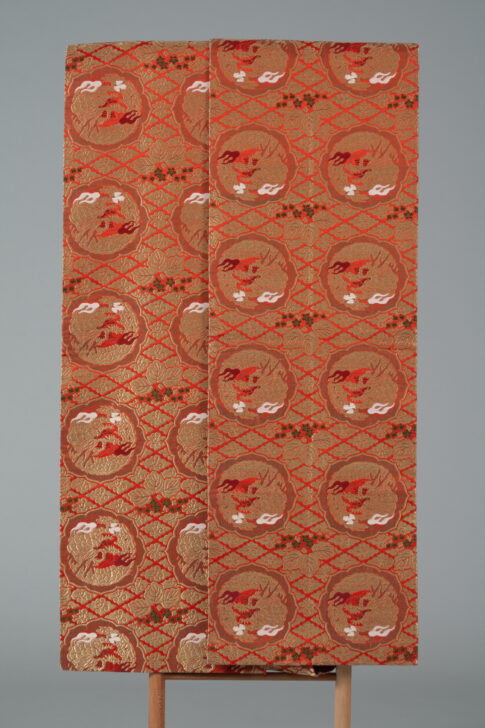Obi
Japanese

Description
Subject Matter:
This is a Nishiji, Nishiki, and Maru Obi in Zentsuu Gara
The majority of the patterning consists of Fundo Tsunagi Mon (lined Fundo Weight motifs) with interwoven cloud and centered paulownia motifs. On either side of the paulownia lie interwoven dark beige eight pointed petaled flowers (hachiryoumon) with a red, gold, maroon, dark beige, and white dragon.
Nishijin-ori textiles were developed in the Nishijin area of Kyoto city and has dominated the production of high-quality woven textiles since the fifteenth century. Nishiki is a type of vibrant silk brocade with vivid and luxurious images using various colorful and metallic (mainly gold and silver). Nishiki brocade is mainly produced in the Nishijin area of Kyoto. Maru obi are the most formal type of obi, having elaborate patterned brocade or tapestry on both sides, typically decorated with rich gold thread. It was most popular during the Meiji (1867-1912) and Taisho period (1912-1925). Gara refers to the orientation, arrangement, and surface area of the patterns and pertains to a specific trend and obi tying style. In the Zentsuu gara type, the obi is entirely covered with designs, patterns, and motifs. The versatility of this patterning allows for a variety of obi tying styles.
Physical Description:
Red Maru (double sided) Obi with interwoven gold and Maroon patterns and motifs.
Usage Rights:
If you are interested in using an image for a publication, please visit https://umma.umich.edu/request-image/ for more information and to fill out the online Image Rights and Reproductions Request Form.